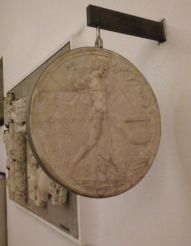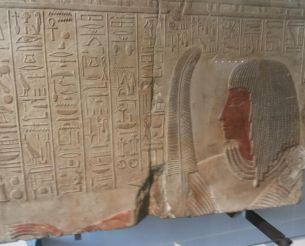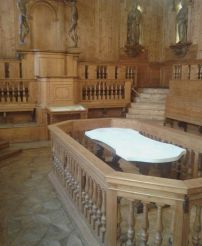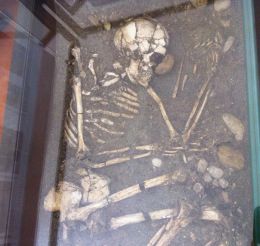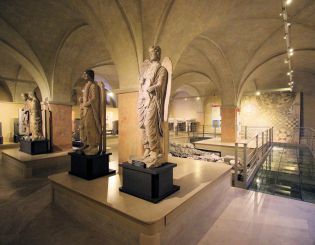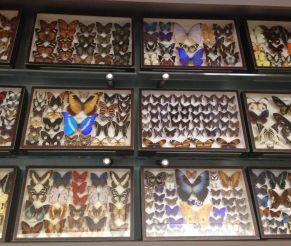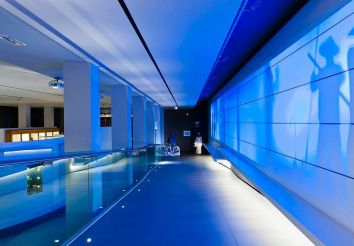National Archaeological Museum, Parma
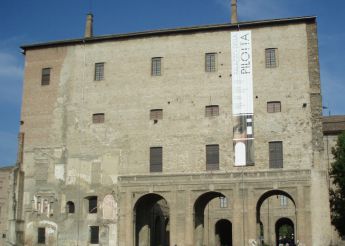
National Archaeological Museum (Museo Archeologico Nazionale di Parma) in Parma is one of the oldest of its kind. It became the first museum in northern Italy, directly connected with excavations. Its core was just the local finds. Over time the collection was greatly enriched with exhibits from other countries and eras. The museum exposition is very much appreciated on the Apennine peninsula.
History of the museum
The museum was founded in 1760 after an archaeological discovery, and was adapted for finds during excavations of the ancient city of Velleia. Its founder was the Duke of Parma Philip I. In the late 18th century, the collection was supplemented with items from the excavation area of the ancient city of Luceria near Parma. In 1803, the most valuable exhibits were taken to Paris, but in 1815, after the Congress of Vienna, they were returned to the collection. After 1816, the Duchess Maria Louise of Austria took the museum under her wing. A substacial reconstruction was carried out, and a large numismatic collection and other items were purchased. After the unification of Italy, the museum had one of the best archaeological collections in northern Italy. During the Second World War, the building and museum collections were significantly damaged. In 1965, the restoration was over, which gave the museum its present appearance.
Exposition of the museum
Two floors of the museum offer a rich overview of ancient Greek and Roman culture, as well as the civilization of the Etruscans and ancient Egypt. At the same time, the collection allows you to trace the history of the formation of the institution and its collections. On the top floor there are collections, not connected with the province of Parma. On the ground floor there is an exhibition that absorbed the history of the region, from the Paleolithic to the Roman Empire. The entire museum route is divided into 5 parts:
- Prehistoric collections. They were founded by Luigi Pigorini in 1867. There is a collection of instruments and other items from the Paleolithic period. Also among the exhibits there are many finds of the Bronze Age, which can give an idea of the main activities such as spinning and weaving, metal processing, and, of course, agriculture.
- Antique collections. Finds that are not related to the region are stored here. The Greek culture is represented by ceramics, mostly amphorae with various mythological patterns. The objects of the Etruscan civilization in the museum are pottery and bronze ware, among them cups, pitchers, urns, exquisite mirrors, statuettes and a magnificent helmet. In the collection there are 12 distinct Roman statues made of marble, as well as findings of early Christian themes: funerary inscriptions, gilt stained-glass windows, and ivory with images of scenes from the life of Christ.
- Ancient Egypt. A separate section is devoted to Egyptology. It was created after the donation of 13 statues of deities in 1826. Attributed to about 200 exhibits, mostly from Thebes and Memphis, from the year 2100 BC, and ending with the 1st century. Also in 2008-2009 a collection of 429 Egyptian scarabs was purchased.
- Core of the museum. The institution was created for the finds from the excavation area of Velleia near Piacenza. Sculptures of bronze and marble, pieces of furniture, ceramics, ornaments, altars, statues of deities are stored and exhibited here. There are even items for body care that belonged to noble townspeople. A special place is occupied by the inscription found in 1747 with the provisions of Emperor Trajan, which gave rise to excavations. This is the largest known Roman inscription. It has a width of 1.38 and a length of 2.86 meters.
- Numismatic collection. One of the largest in northern Italy. It includes coins, from the ancient period to the money creted by Italian mints of the 18th century. It is constantly replenished with findings from new excavations.
How to get there
The museum is located in the heart of Parma, in the historical Palazzo Pilotta, in Piazza della Pilotta, 5. The National Gallery, the Farnese Theater, the Museum Bodoni and the Palatine Library are also in the same palazzo. In 2 minutes walk there is a bus stop Pza Ghiaia. It can be reached by routes 6, 7, 8, 9, 11, 12, 13, 21, 23.
Opening hours: Tuesday to Saturday from 8:30 to 19:00, on Sunday from 13:00 to 19:00. The ticket office closes at 18:30. Monday is the day off. Phone number: (+39) 0521 233718.
Admission: a general ticket is provided for visiting the National Gallery, the Farnese Theater and the Archaeological Museum itself. Its cost is 10 euros, for students (18-25) – 5 euros, for groups – 8 euros. For those under the age of 18 – admission is free. Data of June 2018.



